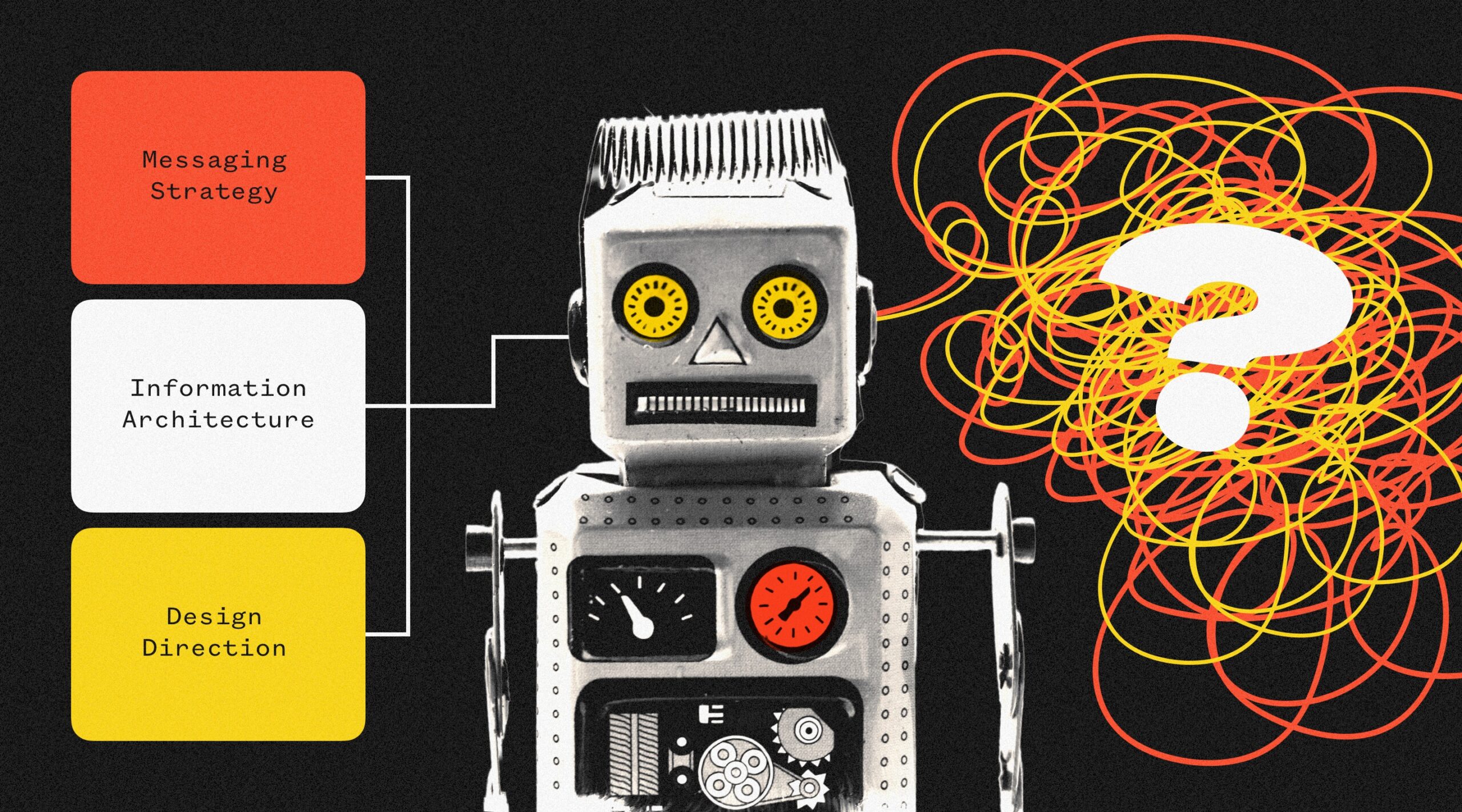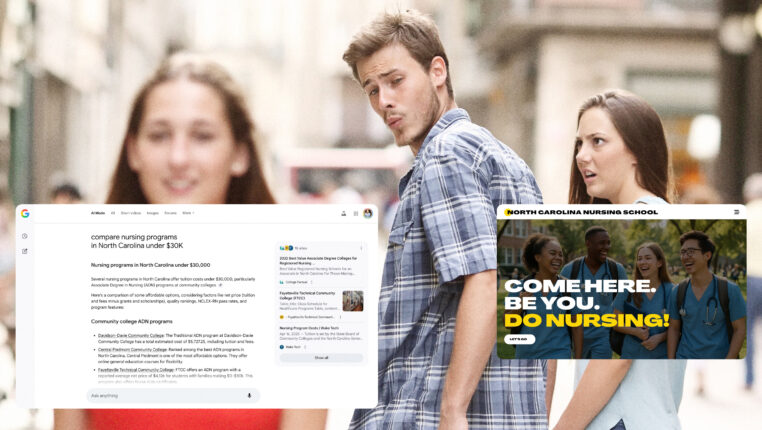We’re here to announce the latest of the ‘doom-and-gloom’ of AI: Website Builders… the buzz is that these platforms promise faster, simpler ways to spin up sites. At Electric Kite, we’re driven by curiosity and a relentless commitment to better for ourselves and our clients, so we didn’t panic.
We didn’t write melodramatic “the robots are coming for our jobs” think pieces (see your LinkedIn feed). We did what we always do… we ran a test. The premise of the test?
If we feed AI a clear strategic foundation: messaging, architecture, and design direction, can it build something on-brand and usable, maybe even close to launch-ready?
In other words, could AI serve as the executor for a well-thought-out, data-driven strategy?
Why We Ran This Experiment
We know AI won’t replace strategy, that’s not what keeps us up at night. We simply believe in pressure-testing every assumption about our craft. What can AI do today? Where does it fall short? And how might we intelligently integrate it into high-impact, human-centered processes? The potential benefits: faster turnarounds, reduced costs, streamlined workflows, are too significant to ignore.
Let’s be clear, even if the results were spectacular (spoiler alert: they weren’t), we’re not in the market to jeopardize product quality for marginal efficiency gains. We’re simply exploring if and where AI can plug in and amplify the work we already do well.
We put the platforms to the test using real inputs.
The result? Strategy in, confusion out.
Here’s what we learned.
Our Experiment: A Real-World AI Web Builder Test Case
Rather than evaluating these tools in a vacuum, we applied them to a real-world scenario: a recently completed project with clearly defined strategy documentation, structured content, and established brand guidelines.
Each AI website builder received identical inputs:
- A comprehensive creative brief with strategic direction
- A style guide with colors, typography, and visual design
- A detailed sitemap outlining page structure and content hierarchy
- Content outlines for key pages
- Brand messaging documentation
- Functional requirements
- Priority graphics and visual elements
- Identical prompt and verbiage inputs
We tested a total of nine different AI website builders, from established platforms extending into AI to newer, AI-native solutions. Each platform was tasked with building a complete website that honored these strategic inputs.
What We Discovered: The Gap Between Promise and Delivery
After extensive testing, several patterns emerged:
1. Strategy Gets Lost in Translation
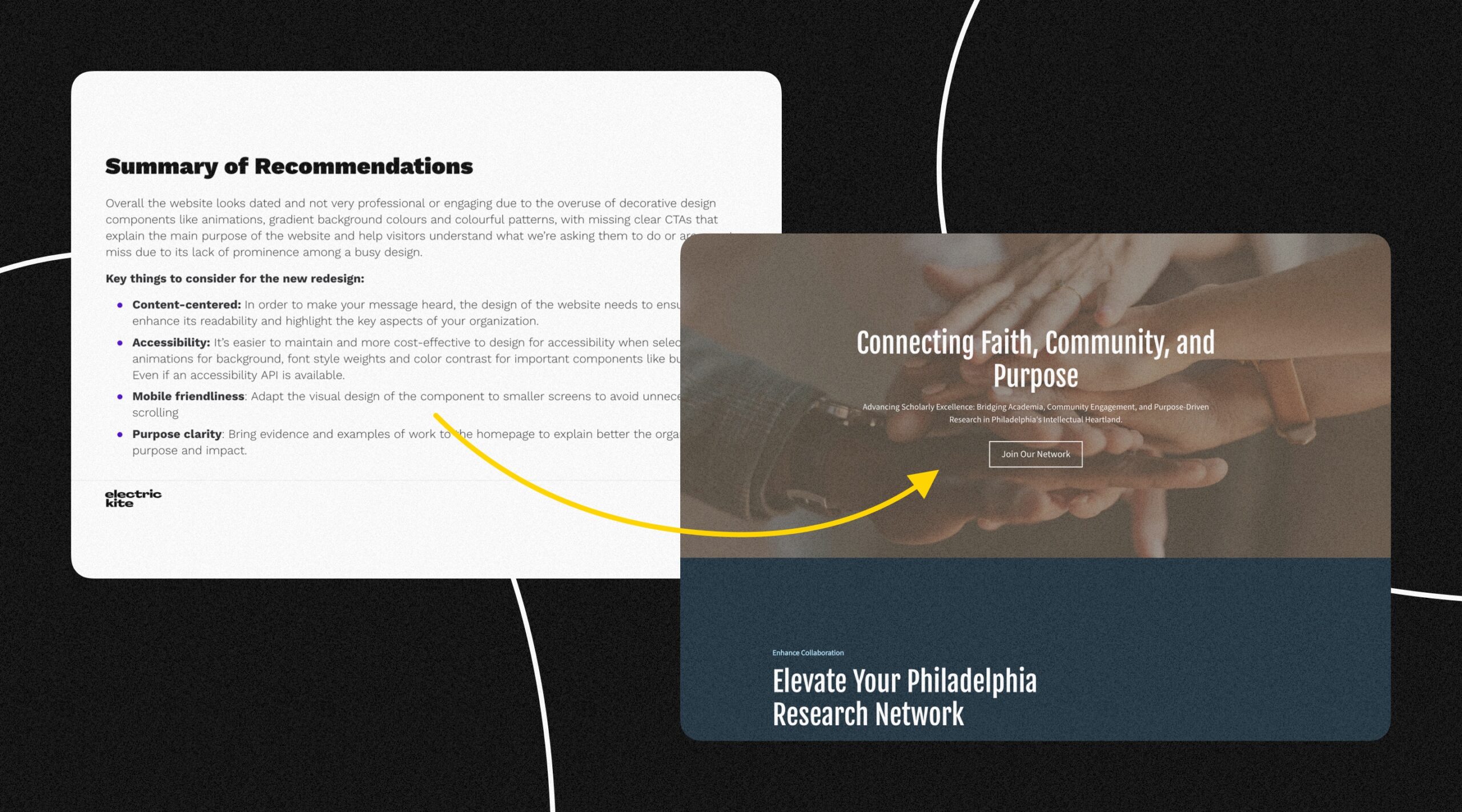
AI tools consistently treated strategy as background noise rather than the guiding framework it should be. Nuanced positioning, brand narratives, and priority user journeys were often ignored or misinterpreted. The tools could read individual sentences but missed the broader context… like ineffectively reading a book, it followed along with the chapters but missed the entire plot.
In the example above, a very specific, tailored input built around our strategic recommendations for an academic think tank with a global mission around health care was interpreted into a bland output that would have falsely presented our client as a local faith-based research organization.
2. Content Structure Becomes Flattened
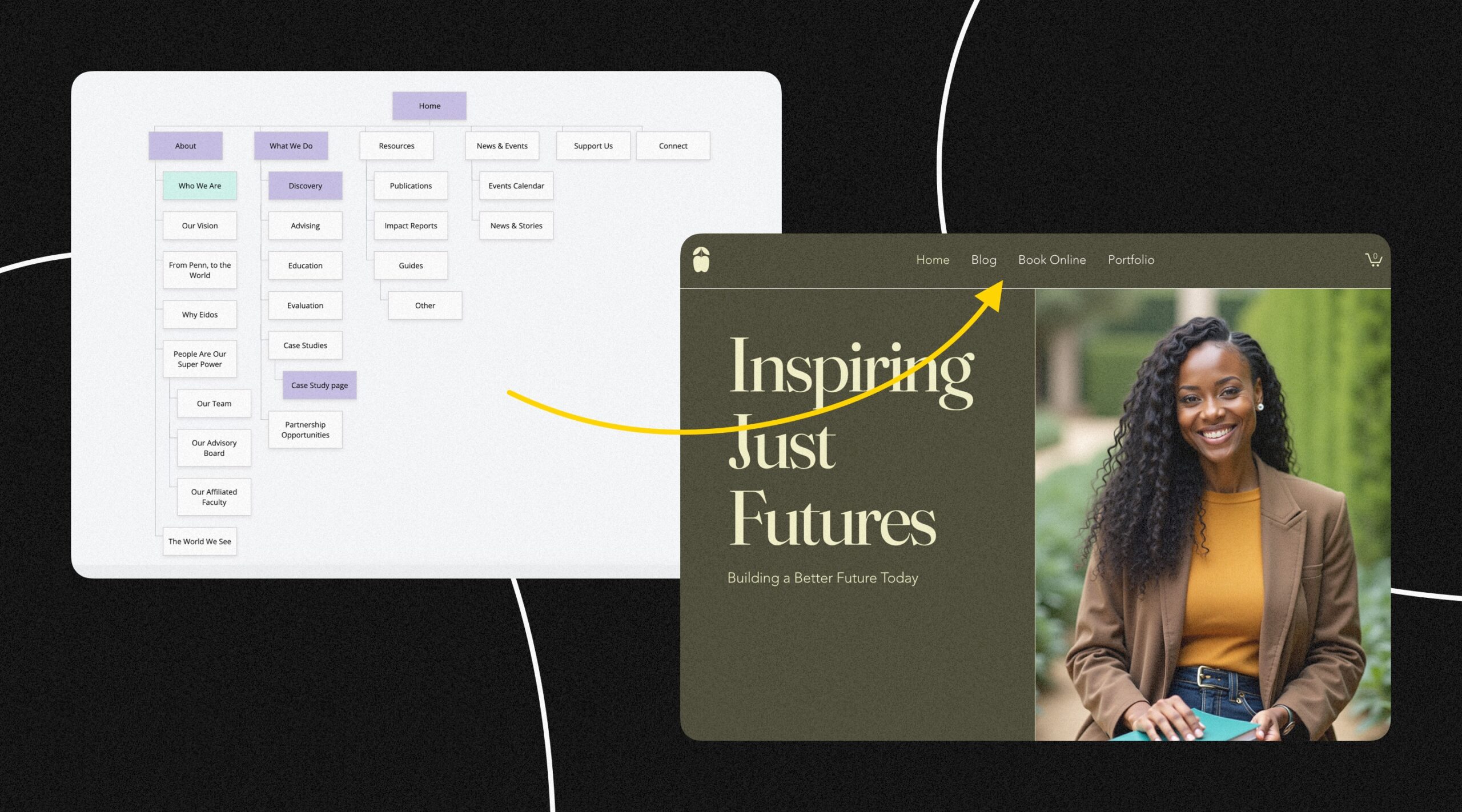
Despite a clear information architecture, AI builders regularly produced flattened site structures with inconsistent navigational hierarchy. The subtle interrelationships between content types that flow users through their journey simply didn’t translate.
When we uploaded the sitemap, messaging guides, and outlines, the systems typically ignored them unless you manually copied and pasted them into specific fields — as you can see in the example above. Even then, the hierarchy and intent were frequently misinterpreted.
3. Brand Expression Reverts to Generic
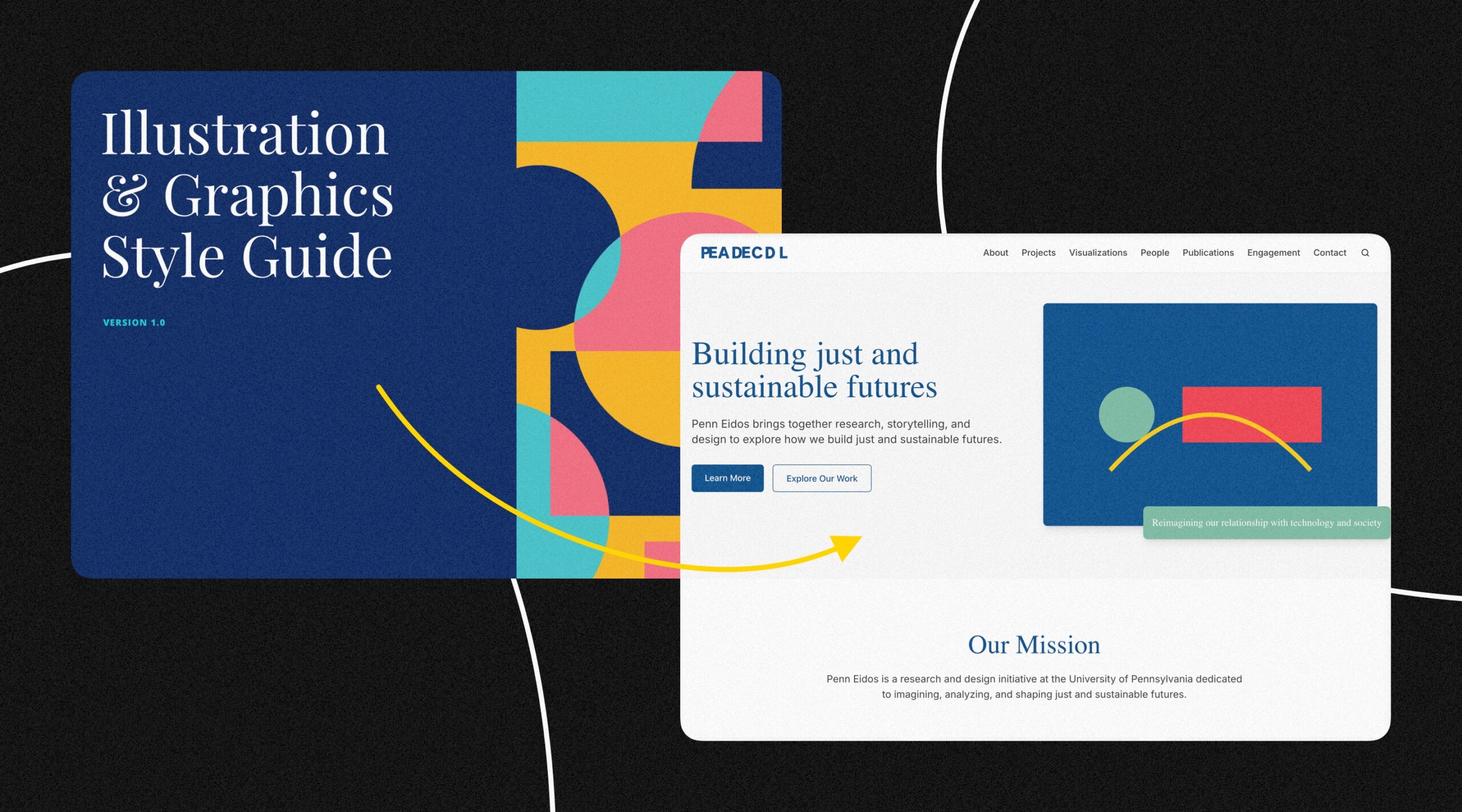
Perhaps most visibly disappointing was how the visual brand defaulted to cookie-cutter layouts and styling, even when brand assets were uploaded. The visual outputs often felt dated, generic, or completely divorced from the brand guidelines… you know that feeling of utter disappointment when you order something supposedly amazing online and get a cheap knockoff? That feeling.
Typography, white space, and visual rhythm, the elements that give a website its distinct personality, were consistently compromised, resulting in experiences that felt mass-produced rather than thoughtfully crafted. As you can see in the example above, a highly creative style guide (image on the left) was used to create stripped-down, simplistic outputs.
4. UX Logic Lacks Coherence
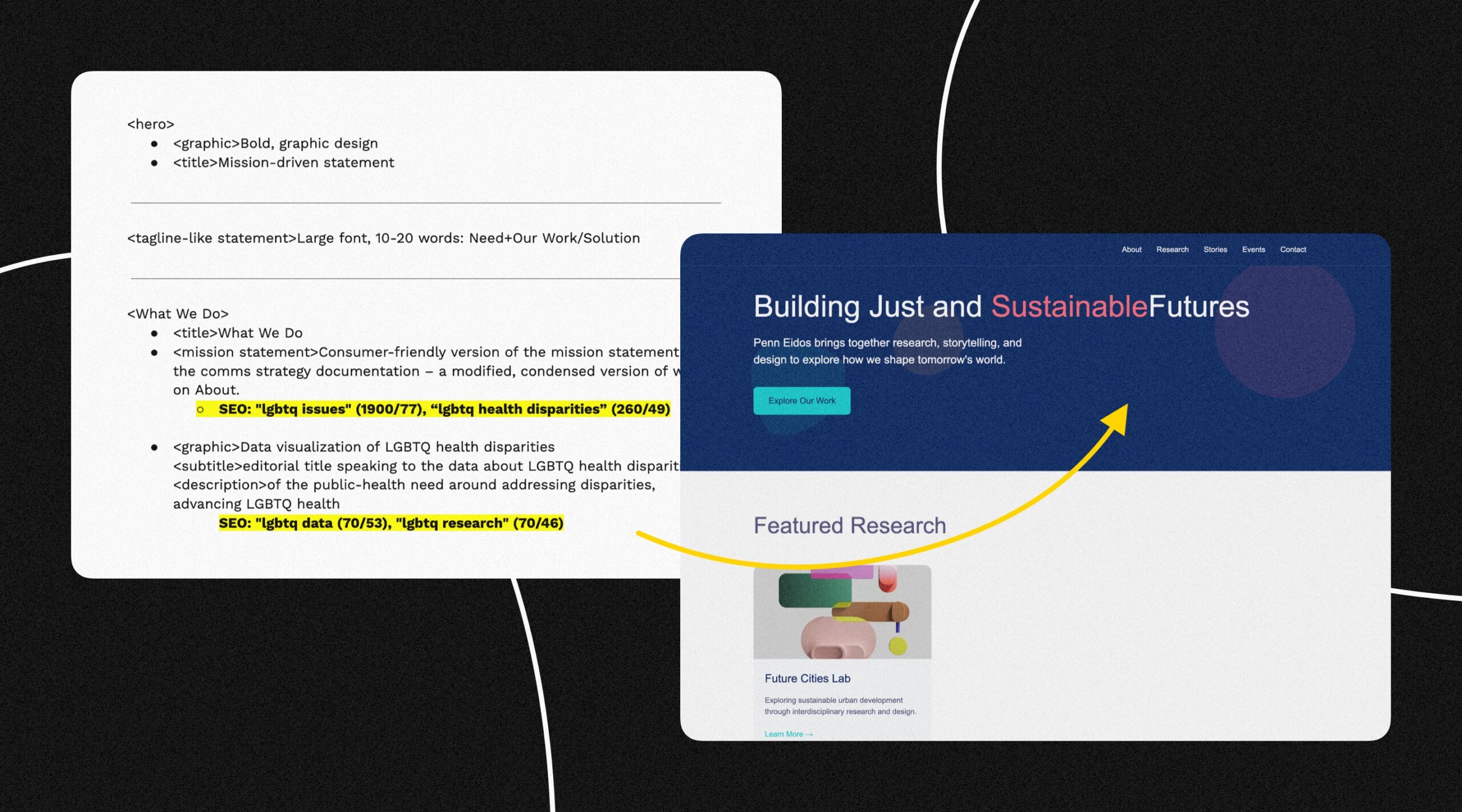
Good UX design is about creating intuitive pathways for users to accomplish their goals. The AI builders consistently struggled with creating coherent user journeys, often placing CTAs in illogical locations or creating navigation structures that lacked contextual awareness. User flows felt disjointed, with pages that existed as islands rather than connected elements of a cohesive experience, something we found in a related-but-different test from not too long ago.
A Case in Point: What Human-Led Strategy Delivers
To illustrate the difference, the project we used as our benchmark ultimately launched with a thoughtfully designed website that precisely aligned with strategic goals, brand expression, and user experience requirements.
The human-crafted site featured nuanced content hierarchy, sophisticated visual storytelling, and carefully considered user pathways that the AI tools simply couldn’t replicate. It wasn’t just aesthetically superior, it functionally delivered on the strategic promises made during strategy planning.
Every AI output required significant rework, not just light editing, but fundamental restructuring of content, navigation, and visual presentation. In most cases, starting from scratch would have been more efficient than trying to salvage the AI-generated sites.
The Bottom Line: AI Website Builders Aren’t Ready for Prime Time
The verdict? AI website builders are not yet viable for client-facing or production-ready execution, even with strong inputs and guardrails.
But here’s the nuance: This doesn’t mean AI tools have no place in digital production workflows. In fact, we know they offer interesting opportunities when positioned appropriately in the process.
At Electric Kite, we’re exploring how AI can serve as a force multiplier for our teams, allowing us to focus more deeply on the strategic and creative thinking that drives meaningful digital experiences.
Our Path Forward with AI:
- Augmenting discovery and strategy phases with AI-powered research synthesis and pattern recognition
- Enhancing content development through content modeling and structure recommendations
- Streamlining QA processes with automated testing for accessibility, performance, and user experience
- Accelerating wireframe prototyping while maintaining human oversight of strategic alignment
The Takeaway: We Give a Damn About Getting This Right
Our exploration reinforced what we’ve always believed at EK: technology is most powerful when it amplifies human creativity and strategic thinking rather than attempting to replace it. We build for humans, not for awards, and certainly not for algorithms. The most successful digital experiences will continue to be those that balance technological innovation with human insight, empathy, and strategic vision.
AI website builders have their place in this ecosystem, not as end-to-end solutions (yet), but as tools that, when thoughtfully applied, can enhance specific aspects of the development process.
As we continue to experiment, our north star remains unchanged: delivering thoughtful, strategy-driven digital experiences that help our clients connect meaningfully with their audiences.
Who knows… maybe in six months we’ll be writing a completely different take. Until then, we’ll be testing.
Curious where AI fits (and doesn’t) in your digital roadmap? Let’s talk about your next digital project.

